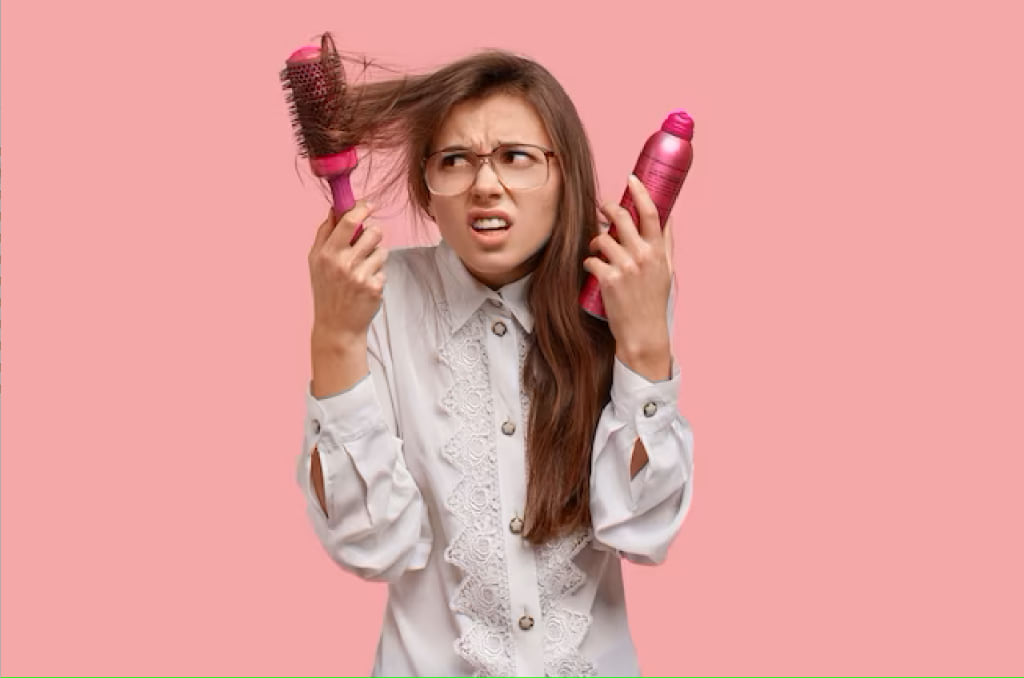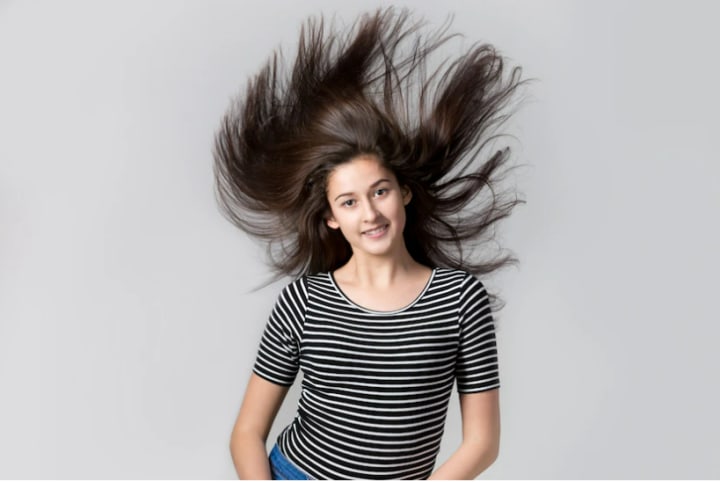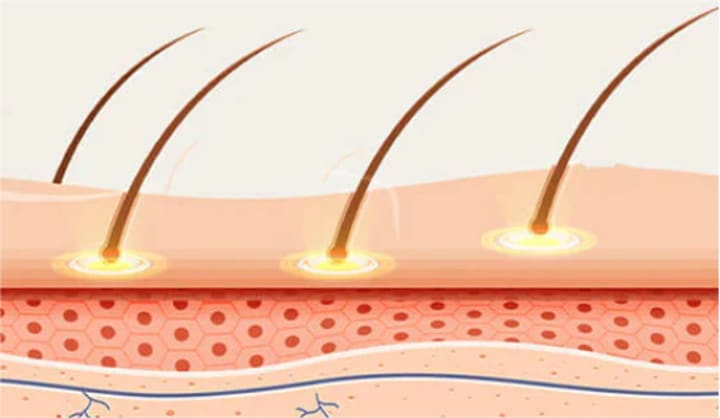Waxing vs. Red Light Therapy: My Personal Journey of Hair Restoration
Craig Smith

I wanted to have thick and voluminous hair, like the models and celebrities I saw on TV and magazines. But no matter what I did, my hair remained thin and limp. I felt insecure and unhappy about my appearance.
I also had a lot of unwanted hair on my body, such as my legs, arms, upper lip, and chin. I hated shaving or plucking them, because they would grow back quickly and cause ingrown hairs, razor bumps, or irritation. I wanted to get rid of them permanently, but I was too scared to try waxing.

I had heard horror stories about waxing from my friends and online. They said that waxing was extremely painful and messy, that it could cause burns, infections, or scars, and that it could even make the hair grow back thicker and darker. They said that waxing was not worth it, and that it was better to stick to shaving or plucking.
I believed these myths for a long time, until I met a friend who changed my mind. She was a regular waxer who had smooth and hairless skin. She told me that waxing was not as bad as I thought, and that it actually had some benefits for hair growth. She explained to me how waxing works and how it affects the hair follicles.
How Waxing Works
Hair grows from tiny structures called follicles that are located under the skin. Each follicle contains a hair bulb at its base, which is where the hair cells divide and grow. The hair shaft is made of a protein called keratin, which gives the hair its strength and structure.
Waxing removes the hair from the root, or the bulb, by pulling it out of the follicle. This causes some damage to the follicle, which may affect its ability to produce new hair cells. Waxing also disrupts the hair growth cycle, which consists of three phases: anagen (active growth), catagen (transition), and telogen (resting).
When you wax, you remove hairs that are in the anagen phase, which is when they are actively growing and have a strong attachment to the follicle. By removing these hairs, you force the follicle to enter the catagen phase prematurely, which is when the hair detaches from the follicle and prepares to fall out. This means that the next time the follicle enters the anagen phase, it will take longer to produce a new hair.
How Waxing Reduces Hair Growth
Waxing can reduce hair growth in two ways: by delaying the anagen phase and by weakening the follicle.
Delaying the anagen phase: When you wax, you remove hairs that are in the anagen phase, which is when they are actively growing and have a strong attachment to the follicle. By removing these hairs, you force the follicle to enter the catagen phase prematurely, which is when the hair detaches from the follicle and prepares to fall out. This means that the next time the follicle enters the anagen phase, it will take longer to produce a new hair. This results in less hair growth over time, as the hairs grow back slower and less frequently.
Weakening the follicle: When you wax, you also cause some damage to the follicle, which may affect its ability to produce new hair cells. The repeated trauma of waxing can cause inflammation, scarring, or infection in the follicle, which can impair its function and reduce its blood supply. This can make the follicle produce thinner, finer, or weaker hairs that are more prone to breakage or falling out.

My Friend’s Experience
My friend told me that she had been waxing for years, and that she had noticed a significant reduction in her hair growth. She said that her hairs grew back slower and finer than before, and that some areas were even completely bald. She said that she only needed to wax once every four or six weeks, instead of every week or two like before.
She also said that waxing was not as painful as I imagined. She said that it only hurt for a few seconds when she pulled off the wax strip, and that it felt like a quick pinch or sting. She said that she got used to it after a few times, and that it was much less painful than plucking or shaving.
She also said that waxing was not as messy as I thought. She said that she used pre-made wax strips that were easy to apply and remove. She said that she only needed to warm them up between her hands before applying them to her skin. She said that she did not need any water or soap to clean up afterwards, just some oil or lotion to soothe her skin.
She also said that waxing did not cause any burns, infections, or scars on her skin. She said that she followed some simple tips to prevent these problems, such as:
- Exfoliating her skin before waxing to remove dead skin cells and dirt
- Applying talcum powder to her skin before waxing to absorb moisture and reduce friction
- Pulling the wax strip in the opposite direction of hair growth and parallel to the skin
- Holding the skin taut while pulling the wax strip to avoid bruising or tearing
- Applying a cold compress or aloe vera gel to her skin after waxing to reduce inflammation and redness
- Avoiding sun exposure, hot water, or tight clothing on the waxed area for 24 hours after waxing to prevent irritation or infection
She also said that waxing did not make her hair grow back thicker or darker. She said that this was a common misconception that had no scientific basis. She said that the hair growth was determined by genetics, hormones, and health conditions, not by waxing. She said that waxing only removed the hair from the surface of the skin, not from the root, so it did not affect the color or texture of the hair.
She convinced me to try waxing for myself. She offered to help me with my first waxing session, and I agreed. I was nervous and scared, but I trusted her.
My First Waxing Session
We decided to start with my legs, since they were the easiest and least sensitive area to wax. She prepared everything we needed: a pack of wax strips, some talcum powder, a pair of scissors, a cold compress, and some oil.
She told me to exfoliate my legs with a scrub or a loofah before we started. She said that this would help remove any dead skin cells and dirt that could clog the pores and cause ingrown hairs. She also told me to dry my legs well and apply some talcum powder to them. She said that this would help absorb any moisture and reduce friction between the wax strip and my skin.
She then took out a wax strip and warmed it up between her hands. She peeled off the protective layer and pressed it firmly onto my leg, in the direction of hair growth. She smoothed it down with her hand and made sure there were no air bubbles or wrinkles.
She then told me to take a deep breath and relax. She said that she was going to pull off the wax strip quickly and that it would only hurt for a moment. She counted to three and then ripped off the wax strip in one swift motion, in the opposite direction of hair growth and parallel to my skin.
I felt a sharp pain in my leg, like someone had slapped me hard. I gasped and clenched my teeth. It was more painful than I expected, but it was over in a second. I looked at the wax strip and saw some hairs stuck to it. I also looked at my leg and saw some redness and swelling.
She told me that I did great and that it was normal to feel some pain and discomfort. She said that it would get easier with time, as I got used to it and as my hair became thinner and finer. She also said that the redness and swelling would subside soon, as long as I applied some cold compress or aloe vera gel to my leg.
She repeated the same process on the rest of my leg, until it was completely hairless. It took about 15 minutes in total. She then moved on to my other leg, and then to my arms, upper lip, and chin. It took about an hour in total.
I won’t lie, it was painful and uncomfortable. But it was also satisfying and rewarding. I felt proud of myself for overcoming my fear of waxing. I also felt happy with the results of waxing. My skin was smooth and soft, without any stubble or prickliness. My hair was gone, without any cuts or nicks.
My friend told me that I looked great and that she was proud of me too. She gave me some tips on how to care for my skin after waxing, such as:
- Applying oil or lotion to my skin after waxing to moisturize and nourish it
- Exfoliating my skin gently every few days after waxing to prevent ingrown hairs
- Wearing sunscreen or covering up my skin when going outside after waxing to prevent sun damage
- Waiting at least 24 hours before applying makeup or perfume on the waxed area after waxing to prevent irritation or infection
She also told me that I should wax regularly every four or six weeks, depending on how fast my hair grew back. She said that this would help maintain the results of waxing and reduce the pain of waxing over time.
I thanked her for her help and advice. I hugged her and told her that she was an amazing friend.
My Experience with Red Light Therapy
After a few months of regular waxing, I noticed some changes in my hair growth. My hairs grew back slower and finer than before, and some areas were even completely bald. I was happy with the results of waxing, but I also wanted to improve the quality of my hair on my head. I wanted to have thicker and fuller hair, like I always dreamed of.
I did some research online and found out about red light therapy for hair growth. I learned that red light therapy is a safe, painless, and effective way to stimulate the hair follicles and increase blood circulation to the scalp. It said that red light therapy can help promote hair growth, prevent hair loss, and improve hair quality.
I was curious about this method, so I decided to try it myself. I bought a red light therapy cap online that had the following features:
- A high number of LEDs (300) that covered the entire scalp
- A combination of red (630 nm) and near-infrared (850 nm) wavelengths that penetrated deep into the follicles
- A cordless design that allowed me to move around freely while using it
- A rechargeable battery that lasted for several sessions
- A comfortable fit that adjusted to my head size
- A timer that automatically shut off the device after 20 minutes
- A warranty that covered any defects or malfunctions
I started using the red light therapy cap three times a week for 20 minutes each time. I followed the instructions carefully and made sure to wear protective eyewear while using it. I also continued with my normal hair care routine of washing, conditioning, and styling my hair.
After a few weeks of using the red light therapy cap, I noticed some changes in my hair. It felt softer, smoother, and shinier than before. It also looked fuller and denser than before. I could see some new hairs growing in my thinning areas.
After a few months of using the red light therapy cap, I was amazed by the results. My hair loss had stopped completely, and my hair had grown back significantly. My scalp was no longer visible through my hairline. My hair looked healthy and strong again.

I was thrilled by the transformation of my hair. I felt more confident and beautiful than ever before. I received many compliments from my friends, family, and colleagues on my new look. I was happy and satisfied with my hair.
Red light therapy for hair growth was the best decision I ever made for my hair. It was a simple, easy, and effective way to restore my hair. It was also affordable, convenient, and safe to use at home. It changed my life for the better.
If you are suffering from hair loss or thinning hair, I highly recommend you to try red light therapy for hair growth. You can find many red light therapy caps online or in stores that have similar features as mine. You can use them at home to treat your scalp with low-level laser or LED light. You will see results in a matter of weeks or months.
Red light therapy for hair growth is not a myth. It is a reality. It works for me, and it can work for you too. Don’t let hair loss ruin your self-esteem and happiness. Try red light therapy for hair growth today and see the difference for yourself!
Do you have any questions or comments about red light therapy for hair growth? Have you tried it yourself? What were your results? Share your thoughts in the comments below!
About the Creator
Health First
Let's get healthy! And things will change someday.
Enjoyed the story? Support the Creator.
Subscribe for free to receive all their stories in your feed.






Comments
There are no comments for this story
Be the first to respond and start the conversation.